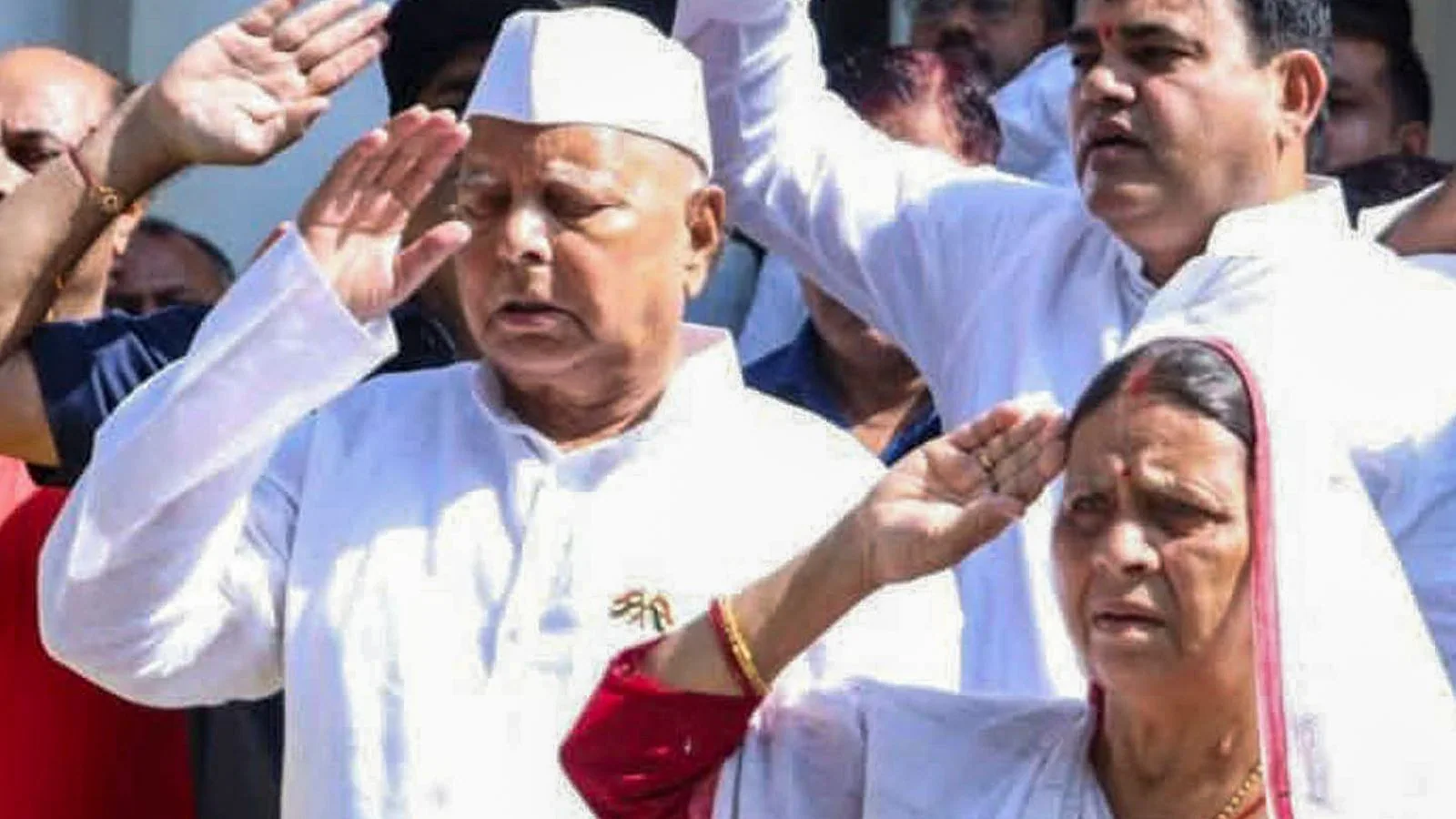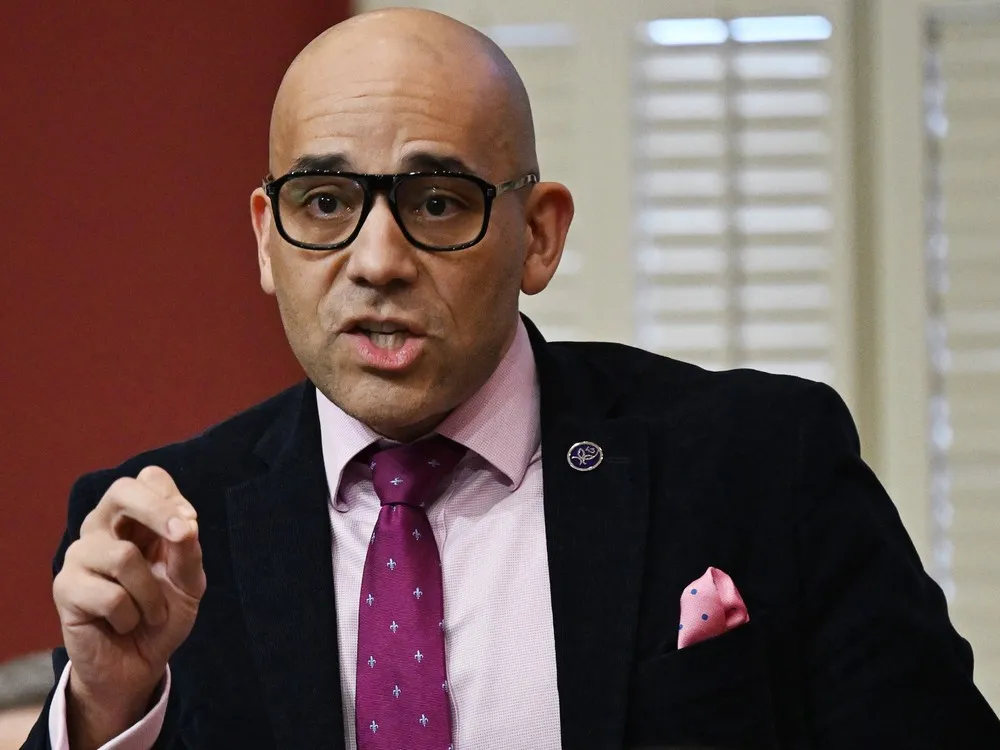Copyright news18

With assembly elections in the politically crucial state of Bihar less than a month away, one of the main accusations from the ruling parties against the opposition is that the Lalu Prasad Yadav-Rabri Devi regime was a period of “jungle raj”. The INDIA bloc has defended against this by stating that the term ‘jungle raj’ was originally used by the Patna High Court regarding a waterlogging issue in the state capital during the monsoon. The opposition argues that if waterlogging during the monsoon in urban centres is considered ‘jungle raj’, then similar situations exist across various states. Although the term might have been used by the high court to describe a civic crisis, it has been more widely used in public discourse to denote lawlessness during the Lalu-Rabri regime. To students of social and political history, the period starting just before the onset of the Lalu-Rabri regime and lasting for several years after is considered the bloodiest chapter in Bihar’s history. This era was marked by caste wars and Maoist violence. During this time, extreme left-wing forces, including the Communist Party of India (Maoist-Leninist-Liberation), Indian People’s Front (IPF), People’s War Group (PWG), and Maoist Coordination Committee (MCC), were engaged in fierce battles with caste armies rather than directly with the state. The state, on its part, willingly acquired “incompetence” to intervene in these battles, which lasted for two decades. The complex caste compositions of the landowning and landless classes made the ruling regime stay aloof to avoid jeopardising its electoral base. While the landless were mostly from the scheduled castes and extremely backward classes, the landowners included not just the upper castes but also a significant portion of the other backward classes, particularly the Yadavs, Kurmis, and Koeris (Kushwahas). A quick overview of the caste armies (or senas as they were locally called), their associated castes, and areas of influence provides a better understanding of the situation. The most well-known was the Ranvir Sena. Although it is believed to have been a Bhumihar-specific army, it included landowners from other castes such as Rajputs and some Brahmins. Its influence spread across central and south Bihar districts like Bhojpur (Ara), Jehanabad, Arwal, Aurangabad, Gaya, and parts of Patna and Nalanda. Next was the Kuer Sena, named after legendary freedom fighter and Rajput zamindar Babu Kuer Singh. This exclusive Rajput outfit dominated western Bihar and other pockets. It later formed a strategic alliance with the Ranvir Sena. Other upper-caste armies included the Bramharshi Sena of the Bhumihars and the Sunlight Sena of the Rajput landowners, which also had Muslim landlords among its ranks. Among the armies of the landowning OBC castes, the prominent ones included Bhumi Sena, associated with the Kurmi and Koeri castes, wielding influence in Nalanda, Patna, Jehanabad, and Gaya districts. Patna district blocks such as Masaurhi gained notoriety due to caste clashes. The Lorik Sena of the Yadav landlords also had substantial influence. There was also an Azad Sena, associated with the Koeri community. On the other side, Maoist-Leninist groups, which had taken up arms on behalf of the landless, included OBCs (mostly landless) and scheduled castes in their cadres. In many instances, these groups were led by left-wing upper-caste intellectuals. While these groups advocated for a casteless and classless society, a closer look at their cadres reveals their caste compositions. One of the most dominant and violent of these groups was the MCC, led mainly by Yadavs and Koeris, with cadres that included scheduled castes and tribes. Its influence spread across the central Bihar plateau and southern districts like Aurangabad, Gaya, Nawada, Jehanabad, Palamu (now Jharkhand), and parts of Rohtas. The MCC was the most violent group of the 1990s, targeting Bhumihar and Rajput landlords and operating a parallel justice system. Another dominant group was the CPI (ML) Liberation, which still exists today. It has a strong base among landless Dalits, especially Musahars, Chamars, and Paswans, though its leadership has mostly been with upper-caste left intellectuals. Its areas of influence include Arwal, Bhojpur, Jehanabad, Siwan, Darbhanga, and parts of Patna and Gaya. It transitioned from armed struggle to parliamentary politics in the 1990s, remaining active in peasant mobilisation and anti-landlord campaigns. There were several other smaller Left splinter groups, more cruel in their delivery of justice. The conflict between the caste armies and the extreme left groups led to unending mass killings in rural Bihar. The list of such incidents is long but noteworthy. The first major killing occurred in 1991 at Dalelchak-Baghaura in Aurangabad, where the MCC killed 54 upper-caste landlords. In 1992, at Bara in Gaya, the MCC killed 37 Bhumihar men by slitting their throats, triggering a massive backlash and the formation of caste senas. In 1994, at Senari in Jehanabad, Ranvir Sena killed 12 Dalit and backward-caste villagers. In 1995, at Bathani Tola in Bhojpur, Ranvir Sena killed 21 Dalit and Muslim CPI (ML) supporters. In 1996, in a punitive strike at Nadhi in Bhojpur, Ranvir Sena killed nine Dalits, mostly CPI (ML) supporters. In March 1997, at Ekwari in Bhojpur, Ranvir Sena killed 10 Maoist cadres. The same year in July, at Laxmanpur-Bathe in Arwal, Ranvir Sena killed 58 Dalits, mostly from the Musahar caste, as revenge for the Bara killings. In 1998, at Haibaspur in Jehanabad, Ranvir Sena killed 10 Dalit villagers. In 1999, at Senari in Jehanabad, the MCC killed 34 upper-caste men after imposing the death penalty on them in a “people’s court”, in retaliation for Bathani Tola and Laxmanpur-Bathe. In October 1999, at Narayanpur in Jehanabad, Ranvir Sena killed 11 CPI (ML) sympathisers, all Dalits. As revenge, in April 2000, the MCC killed 35 upper-caste Bhumihar and Rajput people at Mianpur in Aurangabad. These killings continued well beyond the Lalu-Rabri regime and it took a while to bring the situation under control. After Nitish Kumar came to power, the Bihar government initiated a combined approach of police action, land reforms, and social initiatives to end caste wars and Maoist violence. The first major step was a massive police crackdown in 2007 (Operation Panther) along with a series of social and land reforms (Operation Vishwas). By 2015, Bihar’s share of national Maoist incidents had fallen from 16 percent in 2006 to under 5 percent. Thus, the term ‘jungle raj’ was earned by the state not just due to a civic mess but also due to the Maoist violence and caste wars that left rural Bihar bloodied. The massive migration that took place was due to this violence, and the state continues to recover from the deep social and economic wounds it inflicted. (The writer is author and president, Centre for Reforms, Development & Justice. Views expressed in the above piece are personal and solely those of the author. They do not necessarily reflect News18’s views)



